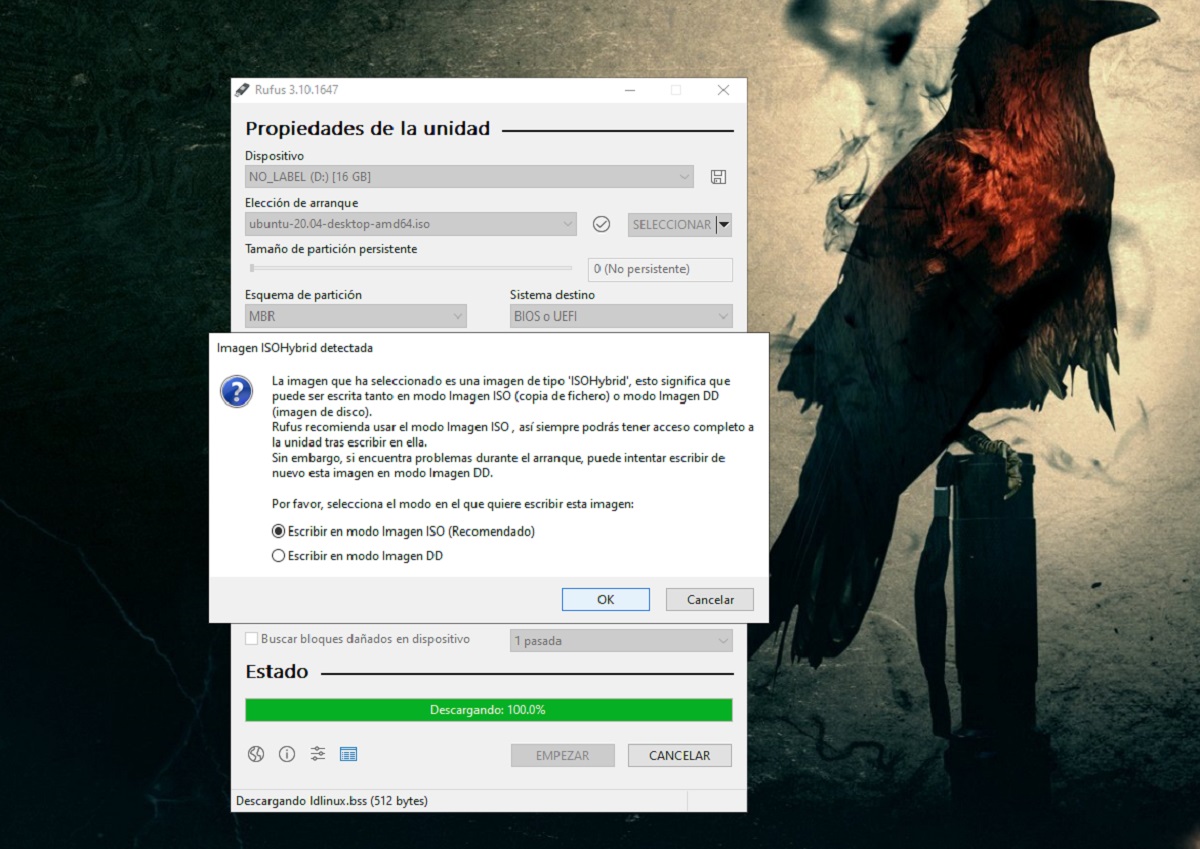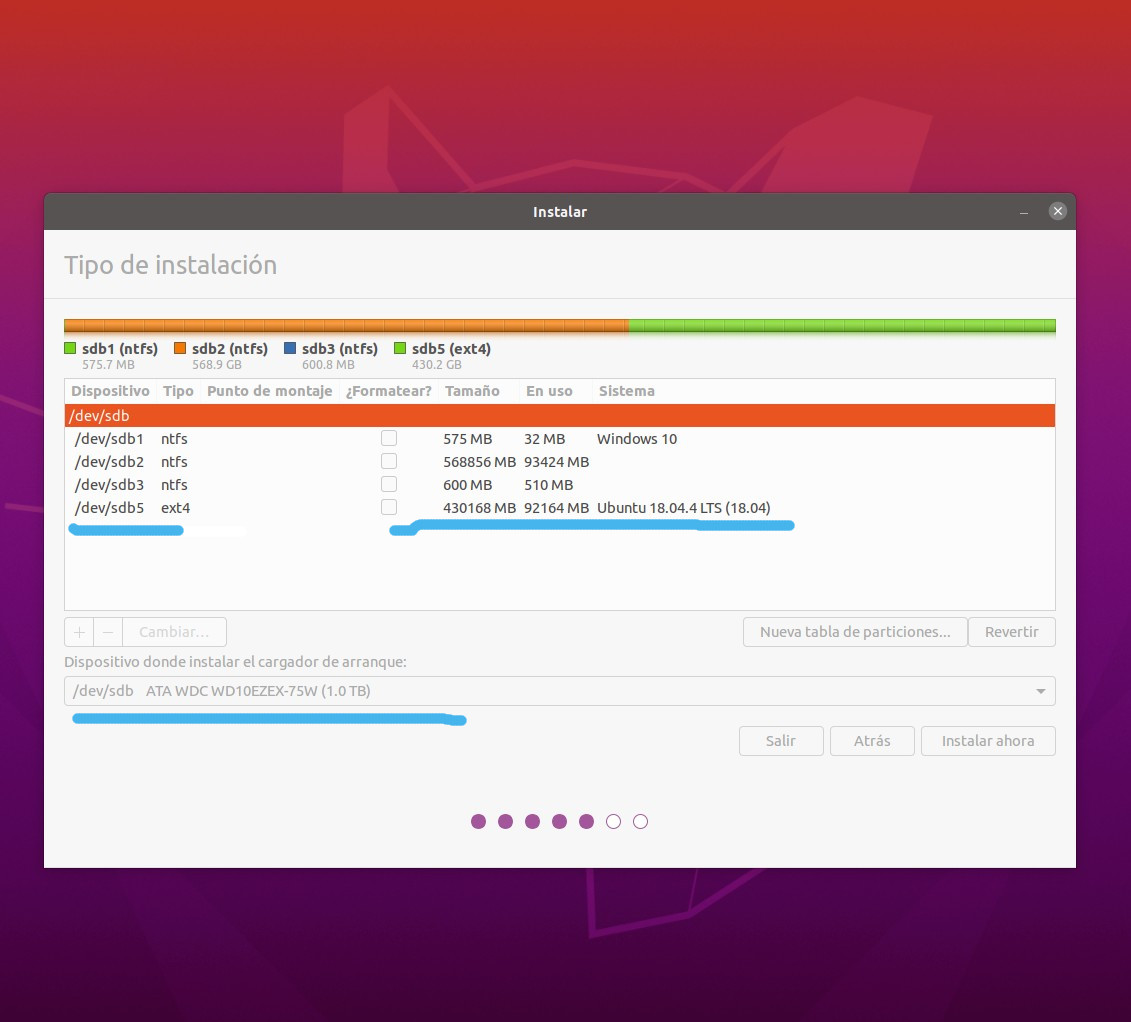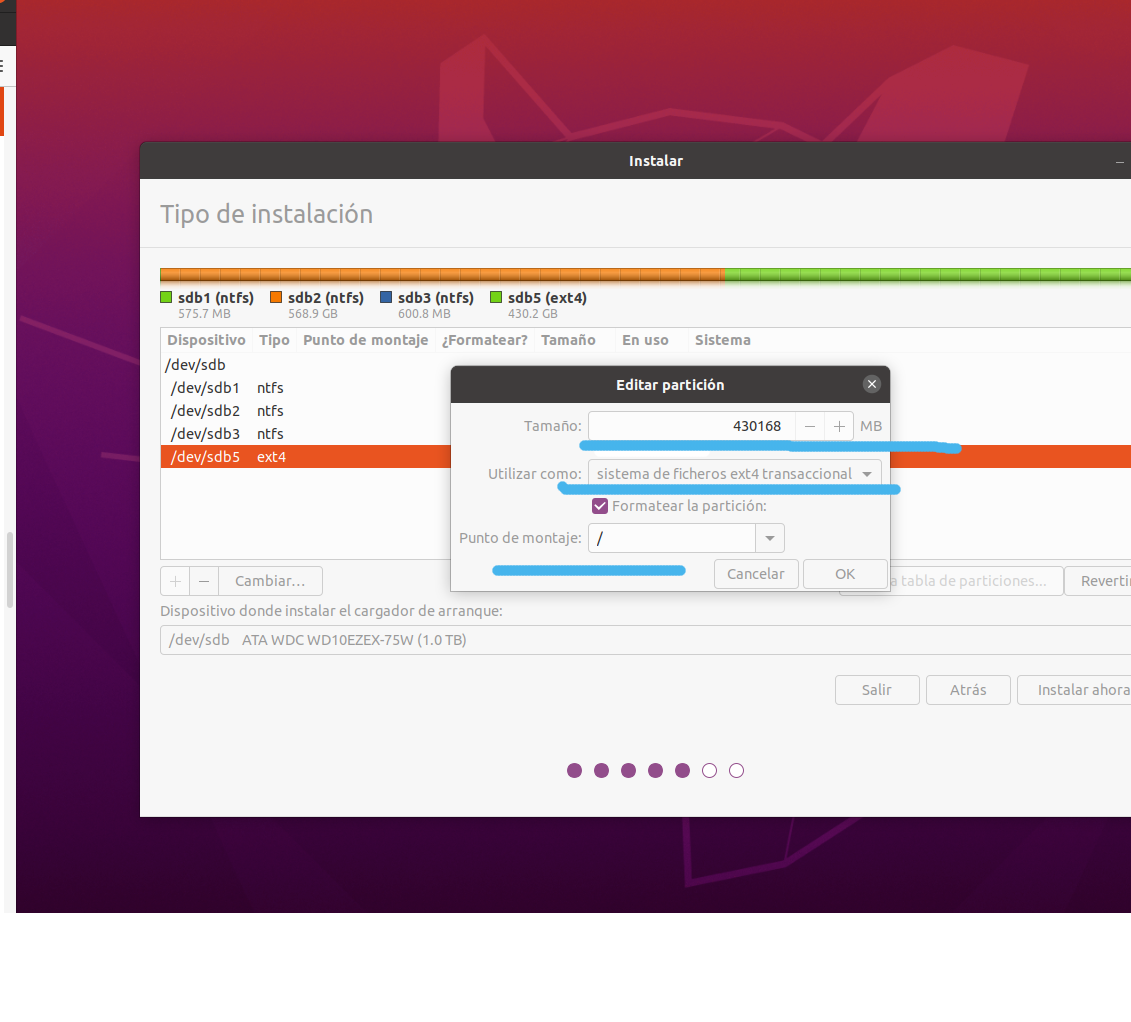
In previous articles I shared two methods in order to install the new version of Ubuntu 20.04 LTS on our computer, this taking into account in one case if we want to make the jump to this new version from a previous one or if we want install the system on our computer from scratch, being this the only one in the team.
For another type of case and that is usually quite common, is when you want to have two systems installed on the same computer, that is, a dual boot. Which in most cases is usually Windows with Ubuntu.
In this stage, I must take into account that you already have Windows installed and you want to have Ubuntu on the same computer, regardless if they are on two different disks, this does not matter.
But I must clarify that If you plan to install both from scratch, I recommend that you always install Windows first. before Ubuntu. And this is because if you do it the other way around, Windows takes full control of your system startup and will only start it, completely ruling out Ubuntu.
Although all is not lost, since can you recover Ubuntu boot with a fairly simple tool from Windows or rebuilding grub from live mode from Ubuntu, but these are really avoidable steps if you do things right.
Installation Process
Well, the first step to install alongside Windows is download the ISO de Ubuntu LTS 20.04 and burn it to removable media, be it a USB, SD or DVD.
In this case, the most common is a USB and for this we are going to rely on an excellent tool called Rufus, which you can download from this link.
We open Rufus and we are going to select our USB, select the image to record and set the mode in BIOS / UEFI, the rest we leave as is and click on start.
It will throw us warnings that the content of the device will be deleted and other things. Then a window will appear asking us to confirm the recording method, in which we choose DD. We start and we only have to wait for the process to finish to restart our computer, but before doing so let's open a console (command prompt) in Windows con admin permissions to disable fast startup as this can cause some problems with the installer.
In it we only type:
powercfg /h off
And with that we can continue, but in case you start Windows again before installing Ubuntu, you will have to re-execute the previous command.
Note.
If you are going to install Ubuntu on the same disk where Windows is installed, it is important that you assign a partition "at least" for Ubuntu, this can be done from Windows with the disk management tool or from Ubuntu with the help of the installer, this is already at your choice.
removable media boot
Now it's time to boot the removable media, here it is important that you modify the boot options of your bios and in case it has UEFI enabled, you deactivate it. Here in this step I apologize, but I cannot cover this section, since due to the large number of boards and bios that exist, the configurations differ in some things, but you can find information about your board or bios on the web.
Once the removable media has started, we will be inside the installer and yeswe will follow the steps requested by the installer (nothing to write home about), the process is similar to the guide I shared earlier. (you can check in the following link)
The only difference is that when choosing where to install Ubuntu we are going to "More options" and we will be shown a new window that displays the information of our diskHard (s) together with the systems we have installed. Here as mentioned above you can modify this part to assign a partition to Ubuntu or to have already done it from Windows.
In this option we can see something like this, where in my case I have a previous version of Ubuntu next to Windows on a disk and in another that I have dedicated only to Arch Linux. To select the disk where Ubuntu will be installed we can do it in this window.
In my case only I am going to delete the one from Ubuntu 18.04 and I will occupy that same space for the new version.
In the settings, we occupy all the space of that partition, we format in ext4 and in mount point «/» or in case you have assigned more partitions or space you will assign the mounting points of each one.
Finally if it is only a single partition, you will not move the place where the grub will be installed, in case of being on another disk you will indicate that the grub is installed on the disk where you are going to install Ubuntu and in this way you do not damage the Windows boot and in Ubuntu the option to boot from Windows is added.
We install now and continue with the process.





You must disable the secureboot only, not the uefi. If you deactivate the uefi and change it to legacy, Windows will not start.
Thank you for your observation. But as I comment due to the configurations that are variable in some computers, they are not the same. And at least in computers that I have at home from about 7-10 years ago they only have the option to disable uefi and with that they support booting from usb (this is what I'm talking about a HP laptop, a Samsung and a dell).
As for my desktop computer it is much older xD and in this I just have to change the boot order.
But as I say you are right and I happened to include that in the article, greetings!
Ubuntu has no problem with the uefi, it installs without problem.
Ok.
Take note.
Thanks for your clarification
Good David.
First of all thanks for the tutorial.
I don't know if you have a solution to this problem that I have.
For a long time I had Windows and Ubuntu on the same hard disk1 and without problems, every time I started the PC I could choose between the two in grub.
Now I have installed Windows on a hard drive2. And I lost that dual boot (I only started Windows). I thought to fix it by reinstalling Ubuntu on hard drive1. Take advantage and update to this latest version. But now when starting the PC only Ubuntu starts me.
I have tried to boot the hard disk2 on which Windows is located from the BIOS and I get "rescue grub" so I cannot access Windows.
I thought that having them on different disks would not interfere with each other and you could choose the system you wanted from the BIOS, but I see that not.
Hello, excellent tutorial, I will tell you about my case to see if they help me: My pc is quite old, it is 10 years old, it is a hp compaq microtower dx 2400. I have 3 hard drives installed: one of 320 Gb where I have windows 10 installed, one of 1 Tb to store files like music, movies, etc and one of 80 Gb where I tried to install ubuntu 20.04 in dual boot with windows. I did the recommended procedure, I installed ubuntu I put GRUB on the same disk where I installed ubuntu, that is, the 80 Gb, start to boot the disk where I installed ubuntu first, PEEEERO does nothing, it stays black with a flickering line, less Too bad that at least I didn't damage windows or the information on the 1 TB hard drive. I have not tried to install it again, I wanted to consult with someone with more experience because I do not want to damage my windows installation. Greetings and I wait for suggestions, thanks in advance
When you start Ubuntu, does the grub appear, giving you to choose what to start?
NOT T_T
So the grub didn't load properly or I can think it loaded on the install media you used, what you can do is reload the grub from the Ubuntu live version or reinstall.
I don't understand about the live version, but I can try to reinstall, thanks for your advice. Greetings
From the same installation medium, instead of choosing the "Install" option, you use the other option, which is "test system", that's what we mean by the live version. Being inside you can follow these steps to try to recover the Gurb https://wiki.ubuntu.com/Recuperar%20Grub
In the same way, you can search YouTube about it, there are many videos showing the process, which is fast, in case of opting for this option you just have to be quite clear about the mounting points and routes of your discs, since you mention that you have in another Windows disk.
Although as a personal comment I recommend you disconnect the other disks and leave the one you have destined for Ubuntu in function (this to avoid any problems and do not load Windows startup)
Everything has worked very well for me.
Thanks for the tutorial.
REQUEST FOR HELP
Buenas tardes! Hopefully someone can help me.
Yesterday I installed Ubuntu 20 on a windows 10 machine.
In C: I have windows
of partition D (blank) of 140 GB, create a 70 GB
Now I have D: (70) E: (70)
I ran the installation, I created in E a 500 MB swap and another 20 GB main partition (here I put the system)
reboot and I could choose which system to use Ubuntu or windows
I tried Ubuntu…. shut down, probe windows ... shut down.
Later when I turned it on, it did not give me the option to start Ubuntu.
I checked partition E and it was empty.
Restart and now I DO NOT APPEAR partition E, as if it had disappeared.
I saw that it appeared unallocated so I deleted partitions and formatted them.
I tried to reinstall Ubuntu, but when I get to the part where it asks me if I want a normal or minimal installation ... I choose Normal and it doesn't do anything anymore, the cursor stays spinning.
Try to do it with version 18 of Ubuntu and it only reaches the same point, I can no longer continue with the installation.
Can anybody help me ??
Hello, I have a pc only with ubuntu 18.04, how do I also install windows 10
NO, AWEONAO, NO! HOW DO I DO THE OPPOSITE CASE? (previously having Ubuntu and not güindou)